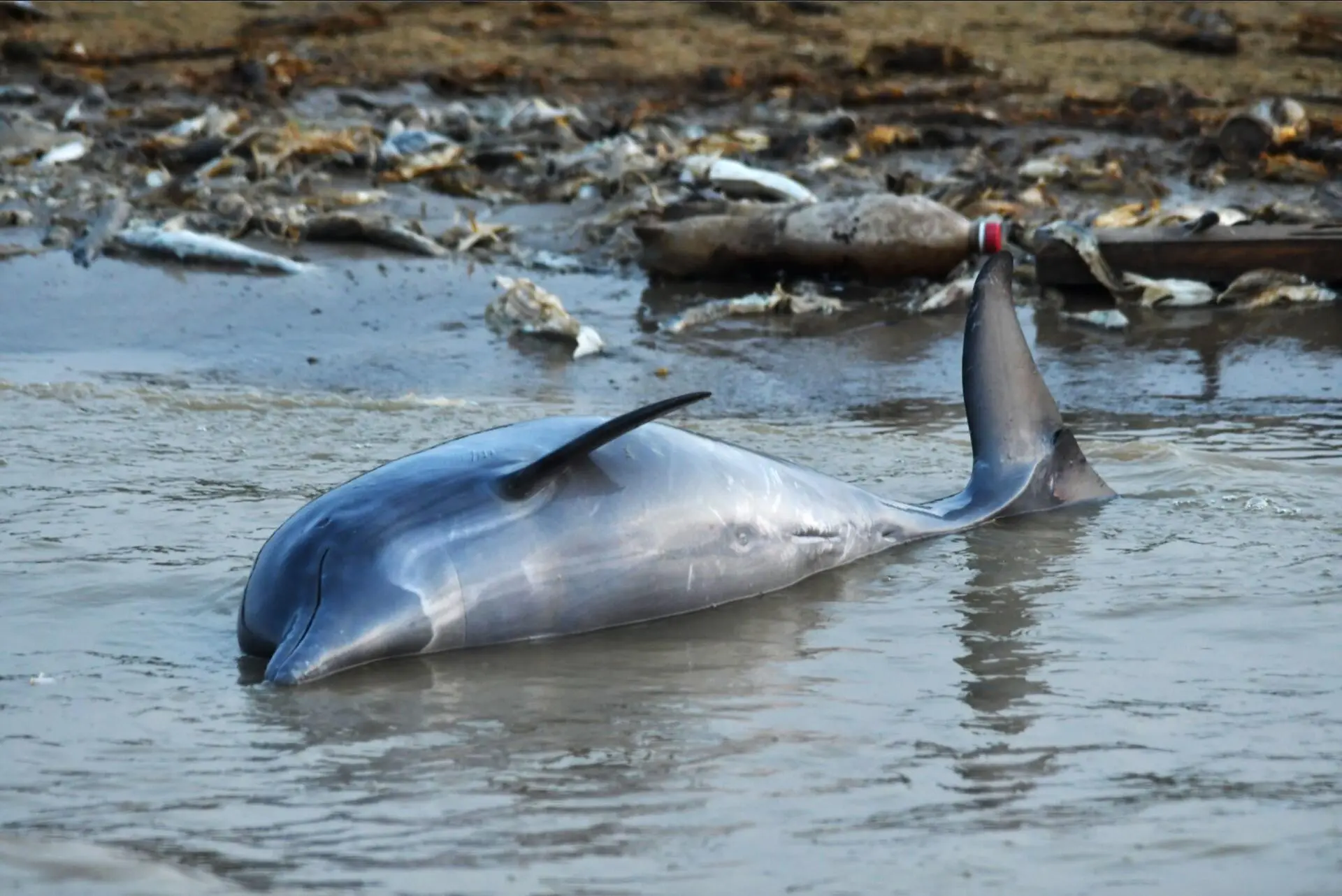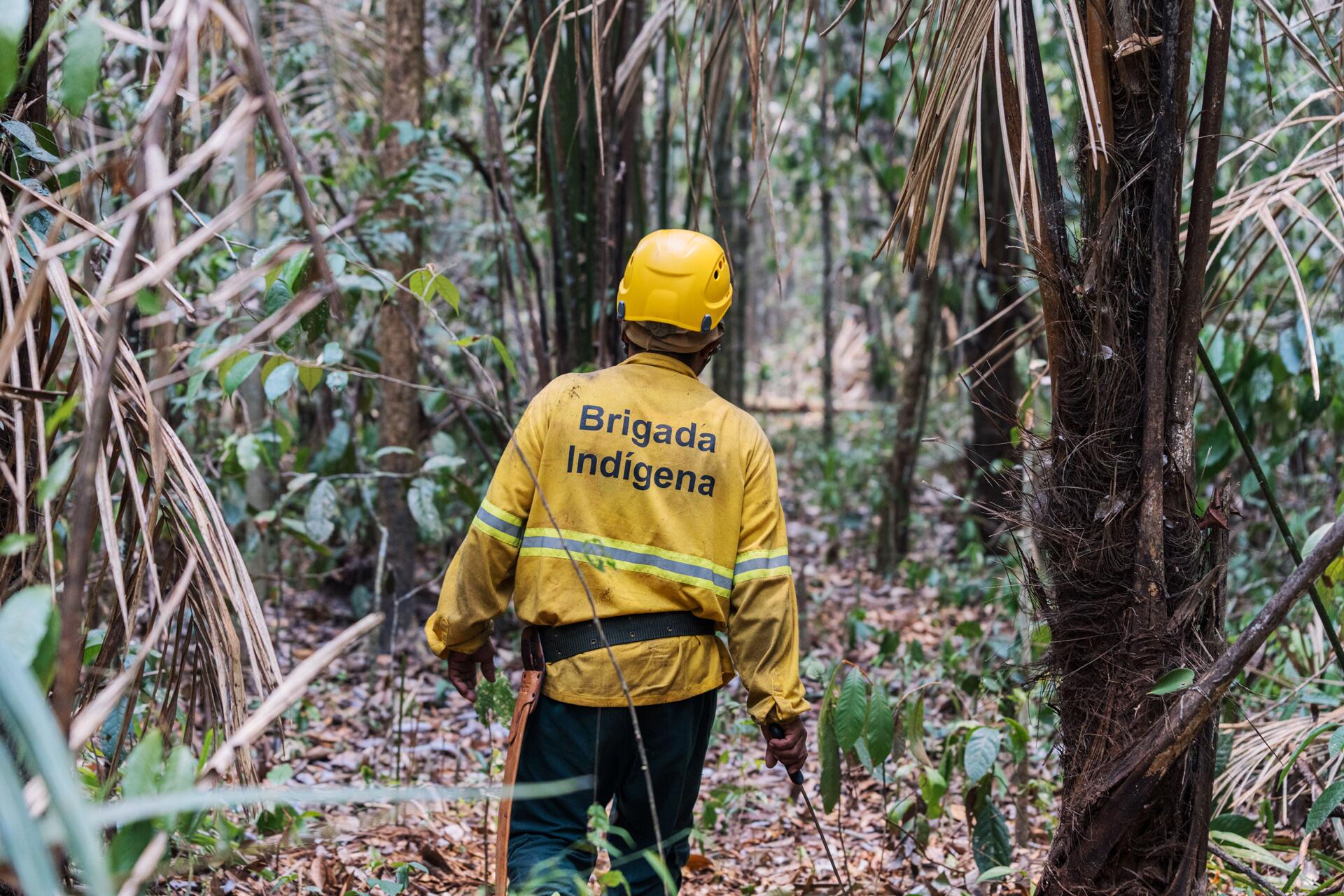“Two years to save the world.” Two years. Two.
That’s not a warning from SUMAÚMA, or an indigenous leader, or an environmental NGO, or a green politician or a climate scientist. That is the title of a speech given this month by the United Nations executive climate secretary Simon Stiell.
As the closest thing the Earth has to a planetary climate minister, he is not raising the alarm without good reason. He has the best science at his disposal, decades of studies and plans, and the world’s most powerful computers to make projections of how much the Earth will heat up in the coming years. He will have attended every major conference and spoken to senior leaders from many different countries.
And from all of this he will know that global heating has entered a very perilous phase. Last month was the world’s hottest March in human history. That follows the hottest February, January, December, November, October, September, August, July and June. Ten consecutive record months.
And the records have not just been narrowly exceeded; they have been shattered by up to 0.2C – a huge gap in terms of the usually slow-moving and steady climate. The picture is even more dramatic for the world’s oceans, which are the planet’s biggest heat absorber. The surface temperature of these vast bodies of water have set heat records every single day of the past year.
These trends have confounded many scientists. They know the main cause is human emissions (from burning trees, oil, gas and coal) and they know El Niño is amplifying this, but even so the speed of the increase has been surprising.

Dozens on freshwater boto dolphins died during last year’s drought in the region of the River Tefé in the interior of Amazonas state. Photo: André Zumak/Instituto Mamirauá
Gavin Schmidt, the director of Nasa’s Goddard Institute for Space Studies – which is one of the world’s leading institutes for climate analysis – said the recent trends were humbling and worrying. “If the anomaly does not stabilize by August – a reasonable expectation based on previous El Niño events – then the world will be in uncharted territory. It could imply that a warming planet is already fundamentally altering how the climate system operates, much sooner than scientists had anticipated.”
Everything will not suddenly end in 2026. The peril is more of a steepening slope than a sudden cliff-edge lurch into the abyss. But if we – as a species – do not act decisively before then to eradicate deforestation and fossil fuel burning, we can say goodbye to any chance of limiting warming to 1.5C. Every moment of delay increases the likelihood of truly frightening levels of heating – above 3C – by the end of the century.
The Amazon rainforest and its people (human and more than human) are already feeling the heat as we show in this issue.

Left. Fire-ravaged area near the community of Anzol. March 2024. Photo: Benjamin Mast/Sumaúma. Right. A roof sticks out of the surface of floodwaters in Brasiléia, Acre state. February 2024. Photo: Braziléia City Hall Communications
Journalist Mayra Wapichana has written a powerful account of the flames that devastated the area around Anzol in the state of Roraima, where fires increased 285% in the first four months of this year compared to the same period in 2023. Indigenous fire-defense teams bravely fought against the blazes with backpack pumps, chainsaws and sickles but they were impeded by a lack of water in an area that is afflicted by drought. Tortoises and porcupines were burned to death, along with native plants such as caimbé, genipapo, guava, copaiba and mirixi. Even deep in the forest, where elders say fire has never reached before, the blazes turned trees and forest into ashes and scrubland. Local residents described their terror on that day which felt like “the end of the world.”
Fabio Pontes, from Jornal Varadouro, reports from the aftermath of yet another flood in Brasiléia, a small riverside community in the state of Acre close to the border with Bolivia. Forty-two families in the area were left homeless after the latest deluge and 420 more may have to be relocated. In fact the local government is now considering whether to move large swathes of the town, for the first time in more than 113 years, because disasters are becoming so commonplace and the high-water mark of the river continues to break records. Massive forest clearance is largely to blame at a local level, along with worsening climate disruption caused by the worldwide burning of fossil fuels.
Here in Altamira, we remember the devastating drought that afflicted many parts of the Amazon region last year. We woke each morning to the smell of incinerated forest, the grim sight of a smog choking the sky, and news of boto dolphins dying from heat and lack of water, of fires around Manaus, of the Solimões at record low levels, of cows dying of famine because pastures turned into deserts.
Can all this be reversed in two years? Definitely not. But that means we must struggle that much harder. We may not be optimists, but we are fighters. We hope the same goes for all of you. Thanks as always for your solidarity. None of us can face this alone.

Indigenous firefighters and firefighters from the National Center for to Prevent and Fight Forest Fires, which is run by Brazil’s environmental agency Ibama, work together to build firebreaks
Text: Jonathan Watts
Fact-checker: Plínio Lopes
Proofreader (Portuguese): Valquíria Della Pozza
Portuguese translation: Denise Bobadilha
Spanish translation: Meritxell Almarza
Photo Editor: Lela Beltrão
Editorial workflow, copy editing and finishing: Viviane Zandonadi
Editor-in-chief: Talita Bedinelli
Editorial director: Eliane Brum





